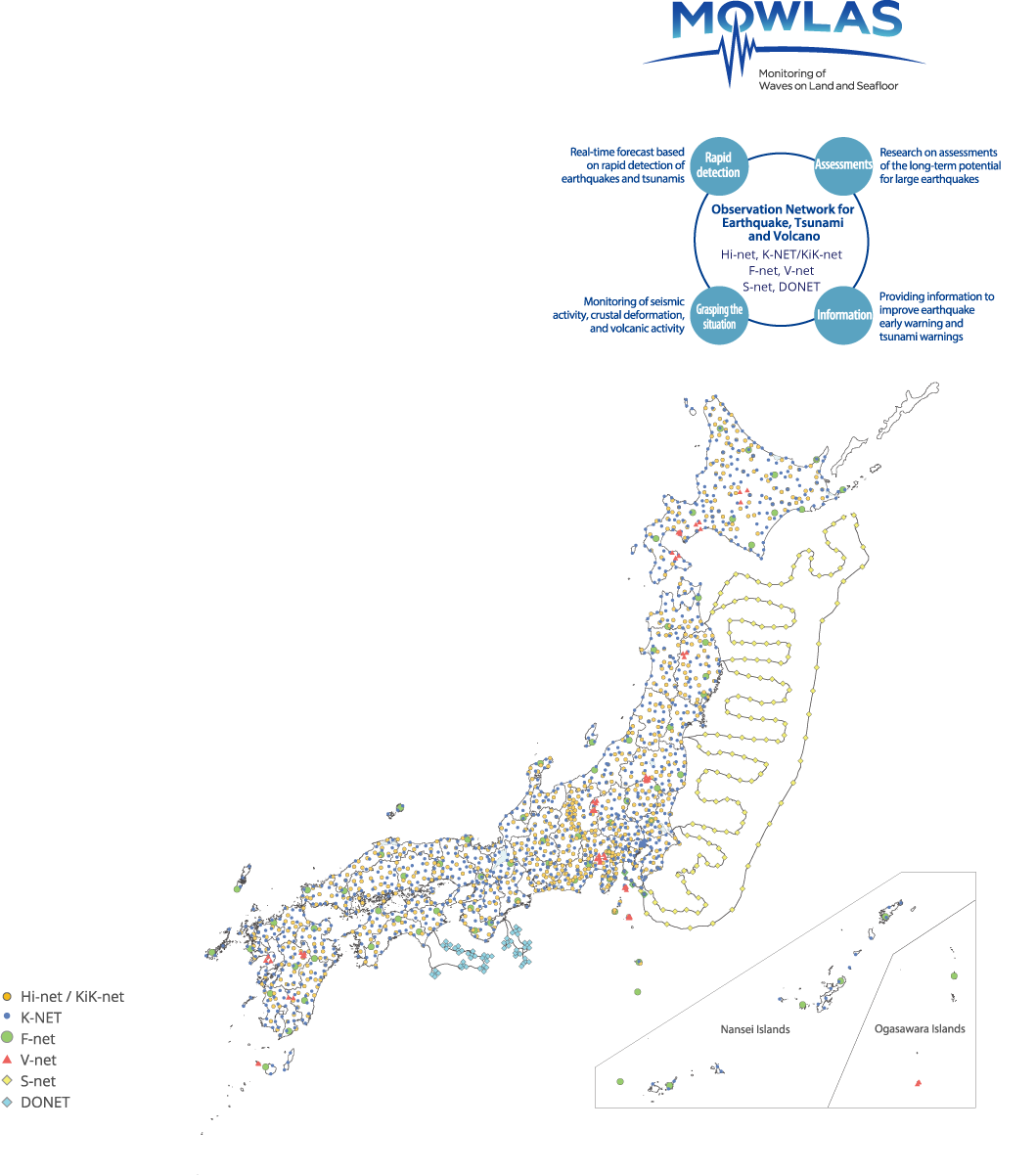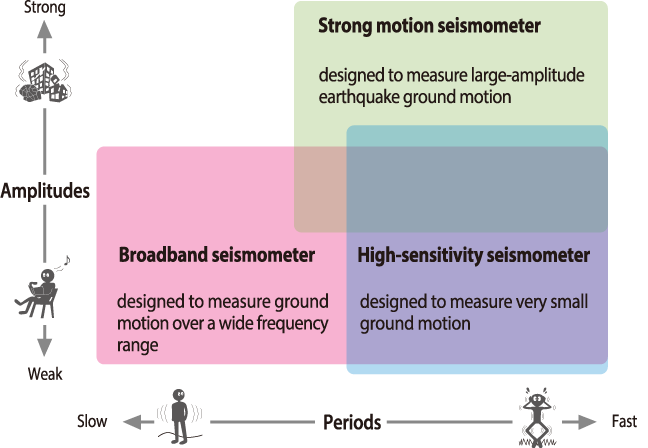
Nationwide observation network for earthquakes, tsunamis, and volcanoes over land and sea
Following the Kobe earthquake on January 17, 1995,National Research Institute for Earth Science and Disaster Resilience (NIED) established four nationwide land observation networks, Hi-net, K-NET, KiK-net, and F-net, to improve understanding and assessments of earthquakes and their impacts. NIED also established V-net at 16 volcanoes to monitor volcanic activity.
After the Tohoku earthquake on March 11, 2011, a seafloor observation network, S-net, was installed from off Hokkaido to off Chiba Prefecture for rapid detection of offshore earthquakes and tsunamis. In April 2016, NIED took over the operation of DONET, another seafloor network in Kumano-nada and off Kii Channel, from Japan Agency for Marine-Earth Science and Technology (JAMSTEC).
Integrated operation of these networks started in November 2017, and the networks were collectively named MOWLAS (Monitoring of Waves on Land and Seafloor).
Furthermore, the construction of the Nankai Trough Seafloor Observation Network for Earthquakes and Tsunamis (N-net), extending from offshore Kochi Prefecture to Hyuga-nada region, began in 2019 and was completed in June 2025.
There are various types of seismometers to measure ground motion. NIED uses three types of seismometers to cover a whole range of amplitudes and periods of ground shaking from earthquakes.


